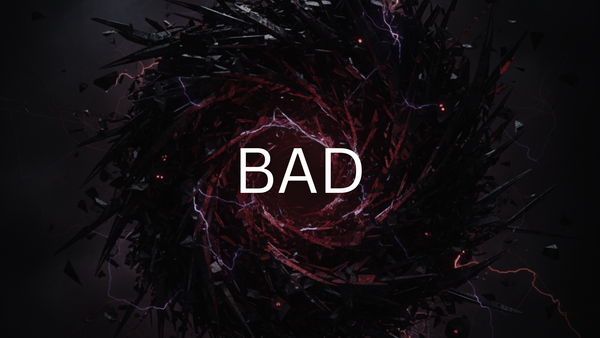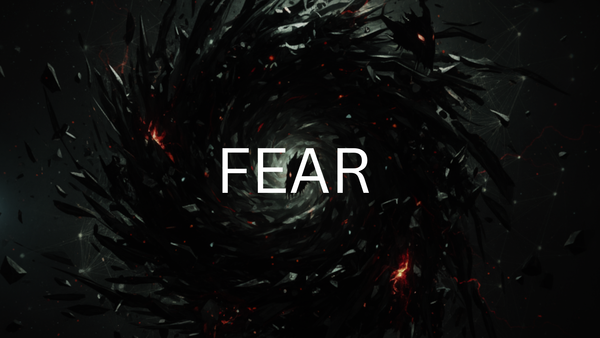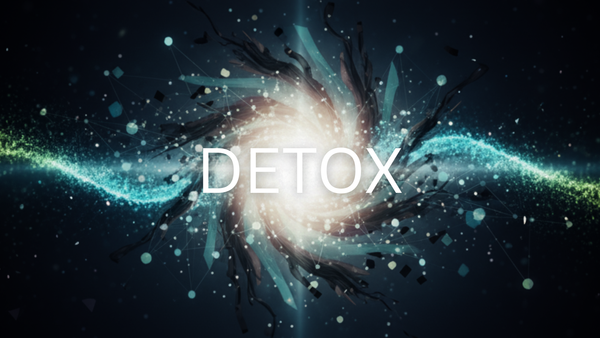Let's Talk Markdown
Are you a writer? Why aren't you using Markdown yet?

It’s rare that I get giddy for some form of writing tool. The first time I felt any excitement for a writing implement was when I was young and started using a typewriter, figuring out how to replace the ink ribbon and seeing the same ink ribbons in the first Resident Evil. Thinking that Chris or Jill must be writing novel length journals to take up one whole roll of ink ribbon whenever I saved.
The next moment would be when my father brought home a word processing device that was much larger than most laptops are today. It ran on MS-DOS and I had to remember the string of commands to run the word processing software and when you were done typing you would save your documents on a floppy disk. I would eventually spend more time loading up games that required passwords that you had to look up in a manual to access but it was still a memorable experience.
Fast forward a couple of years (or decades in my instance) to today and I’m still finding out new ways to make my writing experience as exciting as possible. This time with a Markup language called Markdown.
“But Nick!” I hear you ask. “Don’t we already have word processors like Microsoft’s Word, Apple’s Pages or even Google’s Docs? Why do we need another word processor?”
First off, Markdown isn’t another word processor. But more of set of commands that you can introduce into your document and if your word processor supports Markdown they would automatically format the text based on these commands.
Since it's introduction in 2004, most of us have actually been introduced to the Markdown language and we might even use it daily unknowingly. Can you figure out where? If you like to format your text in apps such as Whatsapp or Discord, you're using a stripped down variant of Markdown to format your text. The two ** that you place around your text to make them bold or a single * at the front of a sentence to start a list. That’s Markdown.
Here's a quick example of how Markdown formatting works if you're still unfamiliar with it. Markdown cheatsheet.
*Humpty Dumpty* sat on a wall. Humpty Dumpty had a great **fall**.would convert to
Humpty Dumpty sat on a wall. Humpty Dumpty had a great fall.
But why does using Markdown excite me you might ask? As someone who has been blogging since the early days of Blogger and Wordpress, being forced to use the barebones interface that these companies provided and if you wanted more control over how your content looked you would have to learn HTML to supplement your writing. Markdown is a great middle ground that keeps you in the momentum of writing while still allowing the writer to produce visually appealing works. Here are a couple of my personal reasons why I would use Markdown both for my personal and professional work. Let’s start with how Markdown fits well with my writing style.
When I write, I prefer to keep both my hands on the keyboard. I don’t like to move my arm around to the mouse to highlight text and change the formatting. Imagine highlighting text on your phone to do the same thing. Through text symbols alone, you can also add headers, footnotes and quotations. This means that you're not taken out of the flow of writing as you could just type out the symbols needed for the format that you want instead of doing so after the fact.
I could use keyboard shortcuts such as Ctrl + B or Ctrl + I to bold or italicize my text beforehand, and this is going to sound like such a first-world problem, but I use 3 different operating systems at home. Windows on my gaming/video editing desktop, MacOS on my laptop and Linux on my home server. Two of those have the same keyboard layout but MacOS uses the command key instead of the control key for shortcuts. What’s worse is that their location on the keyboard is slightly different.
I love the Magic Keyboard that the Macbook has and I write primarily on that but I also spend a comparably long amount of time on my gaming desktop as well and most gamers know the Ctrl key is one of the most used keys on the keyboard and when I type using the Windows desktop I need to switch using the Ctrl key instead for my keyboard shortcuts. That means I’m either using my pinky finger or my thumb to execute the shortcuts. Thankfully I’m able to switch after a few lines of text but when you’re in the mood to put stuff down with whatever little free time you have left you’re gonna want to spend as little time as possible fumbling around.
Lastly, using Markdown helps me professionally by speeding up my work. I'm a writer and editor by trade. So I'm looking at a ton of manuscripts and I need to quickly fix mistakes when I find them. During the developmental phase of writing, I would convert the manuscript into raw Markdown first and it would look something like this.
# Main Header
Body of text, describing the author's *experience* of living in **Antarctica**.
## Sub Header
Another body of text, pre-empting a list of other places they've lived:
* South America
* South-east Asia
* Australia
> Twenty years from now you will be more disappointed by the things you didn’t do than by the things you did. ~ Mark Twainwhich turns into
Main Header
Body of text, describing the author's experience of living in Antarctica.
Sub Header
Another body of text, pre-empting a list of other places they've lived:
- South America
- South-east Asia
- Australia
Twenty years from now you will be more disappointed by the things you didn’t do than by the things you did. ~ Mark Twain
At a glance, I can immediately see the text without being distracted by the chosen formatting. Most of the time the authors didn't even choose the formatting but whichever word processor they used would have a different default setting. It has the added benefit that moving their manuscript from one word processor to another wouldn't unintentionally change their settings and if everyone in the workflow understands how to read Markdown and know what the symbols mean, the author, the editor, the typesetter will know that # corresponds to heading 1 and would be visually different from ## for heading 2. Whereas if we rely on the word processor to change it, sometimes it would be nothing more than a barely noticeable font size change making it hard to differentiate and requiring numerous back and forth with multiple parties on what the intended header level should be.
And there you have it, a quick and dirty introduction to the benefits of using Markdown and why it's one of the more exciting creations to be invented for writing. It is my hope that more people would use it, but I know it's rarely easy to get people to change up what they've already become accustomed to but I do hope that I can push more people to give it a try.



